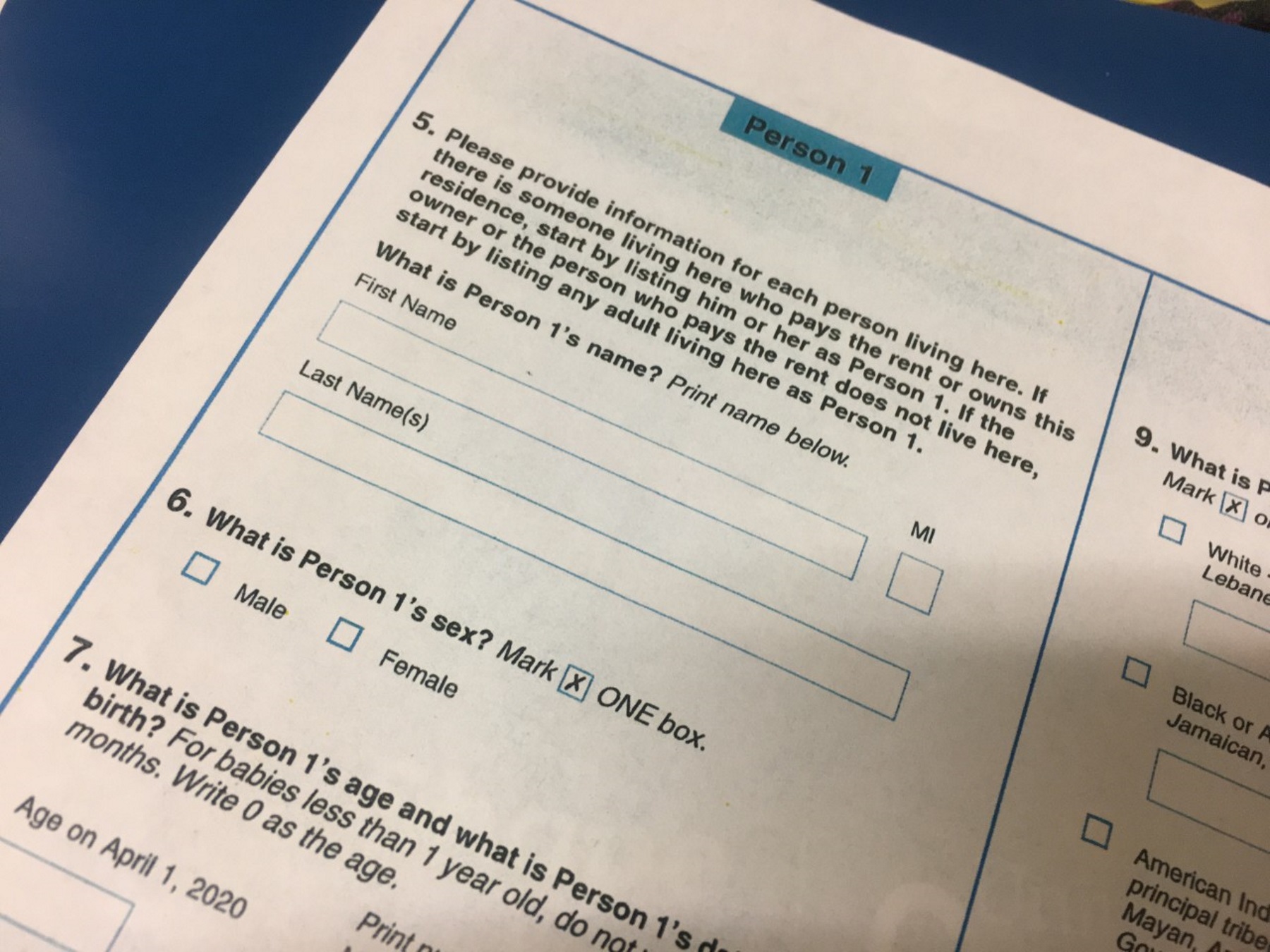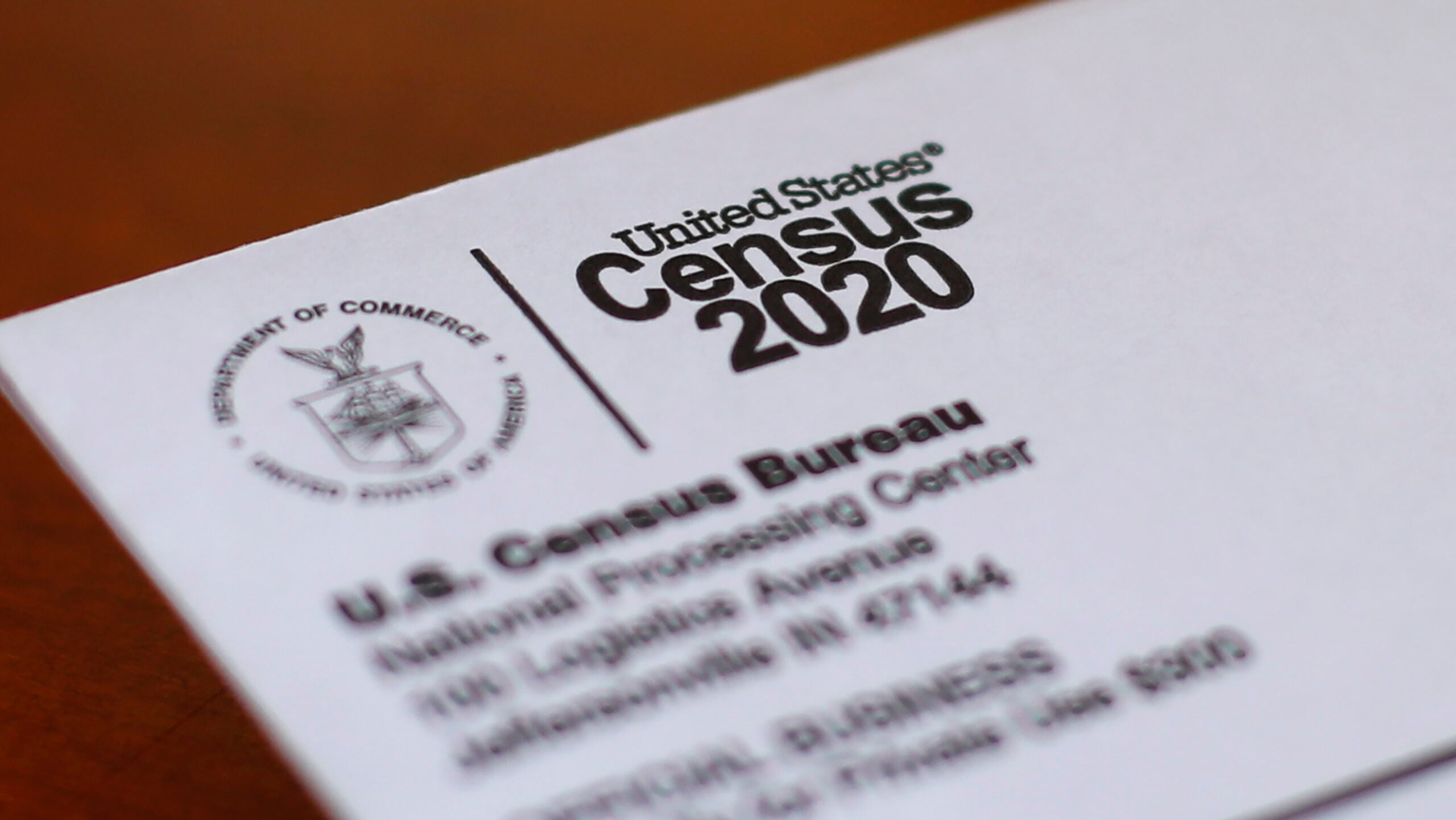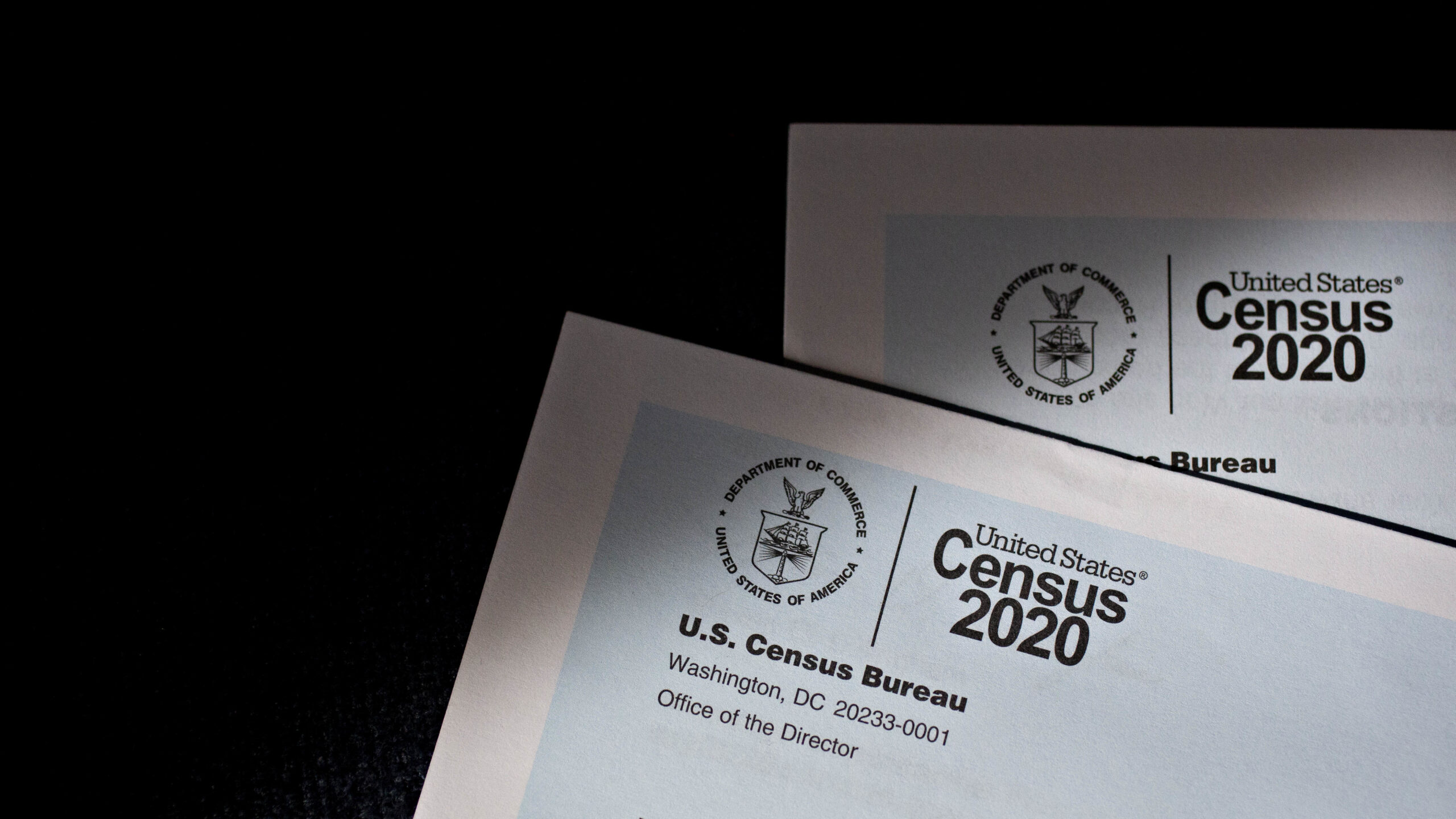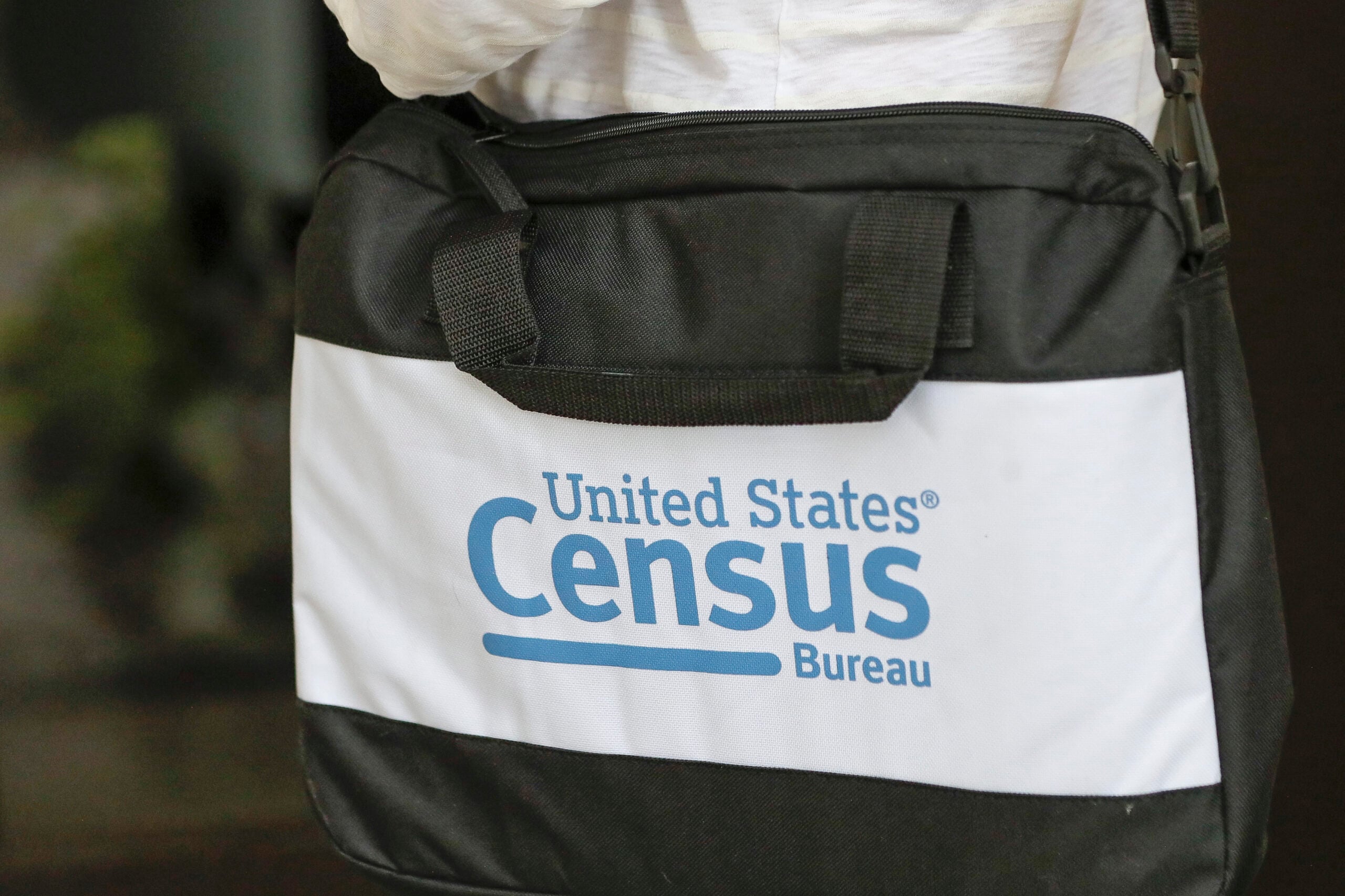Though Census Day is in April, the census will start counting people in Alaska in January. Most people, however, will be able to start filling out the questionnaire starting in March.
How can I take the census?
You can fill out the paper questionnaire or take the census over the phone. If a household doesn’t respond by April, a census worker may go to that home to get responses in person.
Also, the 2020 census will be the first where all households can reply online.
But some are concerned that this could be a barrier for those with limited internet access.
“We’re asking for community groups and churches to open up your spaces and allow community members to come in and use the internet so that they can answer the census,” says Deborah Scott, executive director of the advocacy organization Georgia STAND-UP.
Libraries may also be critical in this effort. According to the Center for Urban Research, there is a public library within five miles of nearly 99% of hard-to-count census tracts.
“By having a public library in every county, we have the opportunity to make sure people have access to that free internet connection,” says Wendy Cornelisen, assistant state librarian at Georgia Public Library Services. “They don’t have to own their own device; they don’t have to have an internet connection at home.”
DeKalb County public libraries, for example, will have dedicated stations for people to fill out the census. Nearly 40 percent of the county’s population lives in hard-to-count neighborhoods.
Teresa Totten, adult programming and services coordinator of DeKalb County Public Library, says, “It’s important for us to know those hard-to-count areas within the county, and we will target those areas probably a little harder.”
What will the census ask?
It will ask for information such as your name, telephone number and the number of people living in your household.
It will also ask for details such as age, sex and race/ethnicity for you and everyone you live with. An individual can answer the census on behalf of everyone in the household.
The questionnaire or census workers will not ask for details such as your mother’s maiden name and full Social Security number. It will also not ask for money or for anything on behalf of a political party.
Who will the census count?
Everyone living in the United States and the five U.S. territories on or around April 1, 2020. The population count for the last census was 308,745,538.
Will the government share my data?
Federal law prohibits the Census Bureau from publicly sharing information that identifies individuals until 72 years after the data was collected.
The bureau also cannot share information with agencies such as U.S. Immigration and Customs Enforcement, the FBI or the IRS.
However, the bureau can share demographic information about groups down to the neighborhood level.
There is a dark history of the Census Bureau sharing data that led to the imprisonment of Americans during World War II.
Historians found evidence that the data from the 1940 census was used to imprison Japanese Americans during this time. Census information was used to target and find out where they lived.
About 120,000 Japanese Americans were placed in internment camps in places such as racetracks.
The 72-year rule was passed after the war. An apology for the internment of Japanese Americans was passed by Congress in 1988. The act also included $20,000 in compensation to survivors of the internment.
What is the data used for?
It’s used to determine more than $675 billion a year in federal money. This includes programs for housing, education and health care.
In fiscal year 2016, Georgia received more than $23 billion of funding for dozens of federal programs. That includes money for Medicaid, Section 8 vouchers, health care centers, student loans, the National School Lunch Program, Head Start, crime victim assistance, business loans and investment grants for transit.
Community organizations also use census data to help plan social programs. And businesses use the information to know where to put grocery stores, restaurants, coffee shops and movie theaters.
The information is used to draw state legislative districts in Georgia. And it’s used to determine representation in the U.S. Congress.
After the 2010 census, Georgia gained one congressional seat in the House of Representatives, which totals a number of 14. The state with the most seats is California, with 53. States with only one congressional seat are Alaska, Delaware, Montana, North Dakota, South Dakota, Vermont and Wyoming.
“In order for Georgia to be adequately represented, we’ve got to have an accurate count,” says Lisa Cribb, executive director of the Southern Georgia Regional Commission.
But does the census really count everyone?
Historically, some populations tend to be undercounted, according to the U.S. Census Bureau.
“Research over decades has shown that people who are renters, non-English speakers, children, low-income or those who change residences frequently are more likely to be missed in the census,” says a U.S. Census Bureau spokesperson.
Steven Romalewski is the director of the CUNY Mapping Service. The organization created a map that pinpoints hard-to-count areas. The map defines a census tract as hard to count if the self-response rate in the 2010 census was 73% or less.
Romalewski says there are a variety of reasons why people may not fill out the census.
“It may be that you’re skeptical – or fearful – of providing information to the federal government (even though submitting census information is safe and required by the Constitution, and is good for your community),” he says. “It may be that your other daily responsibilities took a higher priority than filling out the census form. It may be that you don’t speak English well and didn’t understand the instructions in the mailing.”
According to the map, 22% of Georgia’s population lives in hard-to-count neighborhoods.
Are people counted more than once?
The Census Bureau says it tries its best to make sure people are counted only once. But according to the Urban Institute, white people and people over the age of 50 are some of the groups most likely to be overcounted.
Rob Santos, chief methodologist at the Urban Institute, calls these “inclusion errors.” He says this trend of overcounting has happened since at least the 2000 census.
“We fully expect the trend will continue with the 2020 census and possibly be exacerbated,” Santos said.
He says overcounting happens when people turn in more than one form. These include people with at least two homes who may fill out census forms for all of their households. Or older people may be counted at their residence and a nursing home. Santos says because white people may more readily participate in the census, “these inclusion errors will tend to overcount whites relative to others.”
Will there be a citizenship question on the 2020 census?
No. After a long legal battle, the U.S. Supreme Court blocked the Trump administration’s effort to have a citizenship question on the 2020 form. The administration relented in trying to get the question back on the census.
But some concerned with an accurate count say the attention around the question may have caused some people to be fearful about filling out the census.
Do I have to fill out the census?
Yes. It’s mandated by the Constitution and has been conducted since 1790.
You could be fined if you don’t fill out the form. However, there’s a low chance of that happening.
But for Deborah Scott of Georgia STAND-UP, and others in the state, the census is an important civic duty.
“We want to make sure that people see that this is just as important as voting,” she says.
Do you have a question about the 2020 census? Check out more of our coverage and submit a question here.









